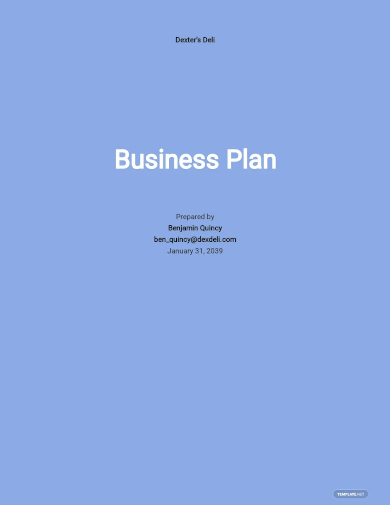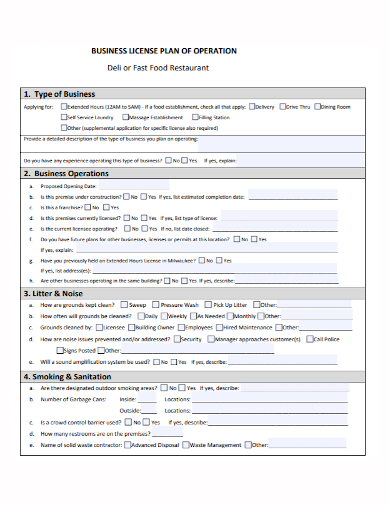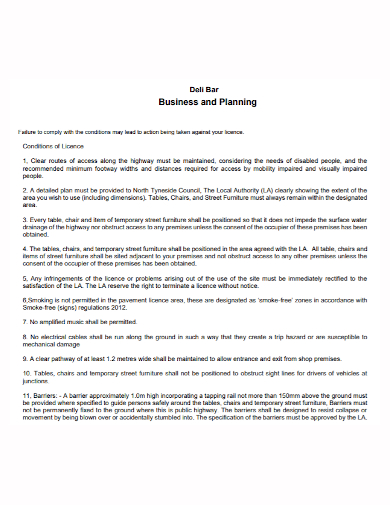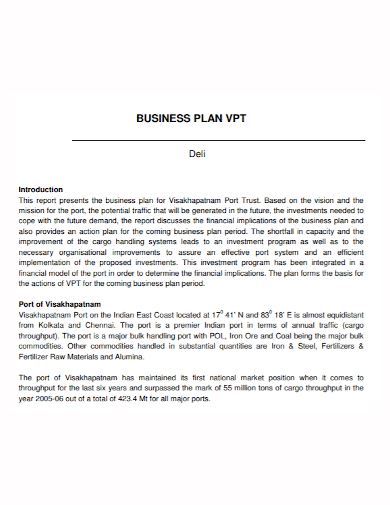Delis are popular due to their quirky and straightforward way of selling ready-to-eat meat and selling meat that is considered as delicacies. Meat is widely consumed by people so it’s no surprise many meat shops are thriving. Food businesses never go out of style so if you’re planning to open a deli restaurant, one of the things you need to prepare is a business plan. A business plan is your compass that will guide your business to thrive by earning income and establishing your brand to the public. Read the article to know how to make a deli business plan.
5+ Deli Business Plan Samples
1. Deli Business Plan Template

2. Sandwich Deli Business Plan
3. Fresh Deli Business Plan
4. Deli Business License Plan
5. Deli Bar Business Plan
6. Sample Deli Business Plan
What is a Deli?
A deli, or formally called a delicatessen is an establishment that sells various affordable foreign or exotic foods that are already prepared for consumption. Delis usually offer cold cuts, sandwiches, and salads.
How to Make a Deli Business Plan
1. Introduction and Executive Summary
This section is where you’re going to introduce your deli business. Make your first page the cover page of your business plan. Attach the logo and the name of your deli store and your name as the owner of the establishment.
The next section is the executive summary. This section provides an overview of the overall content of your business plan. It should highlight the business’s mission statement, the products and services you offer, the financing of your business, your management team, and your sales forecast. Make sure your executive statement does not go beyond one page.
2. Products and Services Offered
The next section is where you describe the products and services you offer to your customers. List them down using a table or bullets to make them easier to read. Some examples of popular deli products out in the market are deli meat such as chorizo, pancetta, pepperoni, salami, roast beef; club sandwich, salads, such as turkey salad or chicken salad; side dishes such as hummus, coleslaw, and many more.
Don’t forget to describe the process of preparing, selling, and storing your products in this section.
3. Industry and Competitive Analysis
This section is where you will provide your analysis of the meat and food industry, such as market trends, growth in the future. Explain how your business will adapt to that. Furthermore, you need to include your competitive analysis. This is where you identify who your competition is and document their strengths and weaknesses. Using that data, explain how you are different and better compared to them and provide ways on how you can compete with them.
4. Management and Staff
This section is where you include all the names of your staff working in your deli. Don’t forget to provide details about their qualifications, training, and work experience related to the food handling and foodservice industry.
5. Location and Target Market
This section is where you describe your target market. This will help you be aware of which customers you can attract and will guide you on how to market your store and your products to them. Know their demographics and psychographic such as their age, what they do for a living, their average income, what area do they live in, what kind of food they eat, what type of food do they love to eat, etc.).
You can the segway to describing your location. Location is key because you’re going to attract the people who occupy near your store. Describe the neighborhood of the location, the square footage of your store, foot traffic in the area, and accessibility to both people and transportation.
6. Marketing Plan
This section is where you explain in great detail how you will market your deli store through advertising and promotion. Include all the marketing strategies you’ve come up with that will get the attention of your target market, and how you can establish your brand.
7. List of Contractors
List the names of your contractors, such as your suppliers, architects, attorneys, etc. who help you in establishing your store who are not part of your business. Explain the tasks they do to help you and state your reasons why you chose these people.
8. Financial Plan
The final section of your business plan, and probably the most detailed is the financial plan. The financial plan must include any important information about your finances and the way you handle them. Financial information such as the current capital requirement budget, profit, and loss statement for the first three to five years of operation, break-even analysis, projected cash flow, projected balance sheet, and business ratio should be present in your plan.
FAQs
How much money can you earn working in a deli?
The average deli worker salary varies from $17,000 to $25,000 per year.
What equipment do I need to start a deli?
Opening a deli business requires a lot of equipment and appliances. You’re going to need commercial refrigerators, meat slicers, cutting boards, dishwashers, commercial toasters, ovens, steam trays, grills, and many more depending on the quantity and variations of your deli products.
How much money do I need to open a small restaurant?
The average cost of starting a restaurant is around $200,000 to $400,000.
Once you’re done writing your business plan, make sure to review for any grammatical and spelling errors and any inaccuracies present in your business plan. Remember, a well-crafted business plan goes a long way to ensure the success of your business and to avoid startup blunders such as failing to make income or getting bankrupt in just a year. To help you get started, download our free sample business plan templates provided above to use as your guide!
Related Posts
FREE 16+ Nonprofit Business Plan Samples
FREE 16+ Boutique Business Plan Templates
FREE 14+ Consulting Business Plan Templates
FREE 13+ Sample Software Business Plan
FREE 12+ Charity Business Plan Samples
FREE 10+ Rental Property Business Plan
FREE 9+ Immigration Business Plan Samples
FREE 8+ Distributor Business Plan Samples
FREE 8+ Sample Personal Business Plan
FREE 7+ Sample Short Business Plan
FREE 31+ Sample Business Plan
FREE 25+ Sample Construction Business Plan
FREE 14+ One-Page Business Plan Samples
FREE 14+ Travel Business Plan Templates
FREE 13+ Sample Daycare Business Plan





